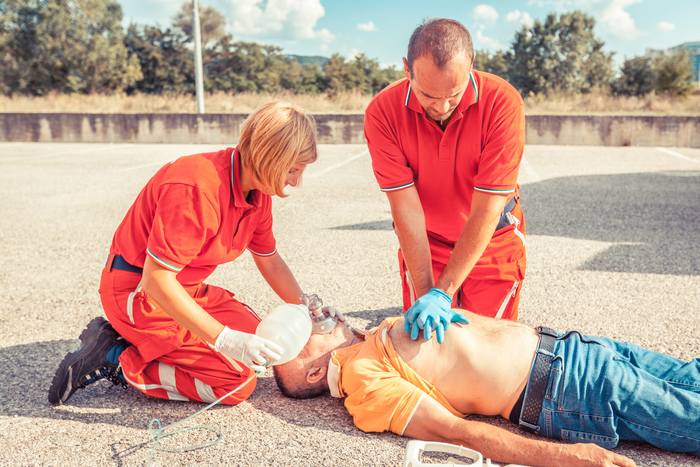
Anyone who has worked in the field of EMS has worked their fair share of codes. You arrive on the scene to find a patient in full arrest, so you initiate CPR, begin bagging, and break out your ALS equipment. Everything is running smoothly—that is until the patient vomits. You reach for your portable suction unit, only to realize you left it on the truck. Big mistake!
Common Causes of Sudden Cardiac Arrest
Any type of injury, from automobile crashes to drowning, can cause cardiac arrest if the patient sustains a high enough level of trauma or extended oxygen deprivation. There are also underlying conditions that can lead to the phenomenon of sudden cardiac arrest (SCA). SCA is usually the result of ventricular fibrillation caused by:
- Coronary heart disease
- Physical stress from
- Intense physical activity
- Low levels of potassium or magnesium
- Major blood loss
- Severe lack of oxygen
- Inherited disorders
- Structural changes in the heart
Managing the Cardiac Arrest Victim
In the U.S. alone, approximately 356.000 people of all ages experience EMS-assessed out-of-hospital non-traumatic SCA each year, and nine out of 10 victims die. Cardiac arrest scenarios require careful coordination. Everything must happen in sequence: Compressions must be started immediately, if they aren't already being done; the airway must be secured, either through effective bagging or an advanced airway; and monitoring and drug therapy must be initiated to restart the heart.
But all of this careful coordination will go right out the window if you are not prepared for a clogged airway. And the only way to remove phlegm, vomit, or blood from the airway is through effective suctioning using your portable suction machine.
We've all been there. The code may be going smoothly, but a clogged airway could be right around the corner. The patient may have a full stomach, and the tube may not yet be in place. Bagging can produce gastric distention, causing a sudden evacuation of the stomach. Or the patient may have a traumatic injury that continues to bleed into the oral cavity. Any of these scenarios can result in airway compromise if immediate suctioning is not performed. And the best way to prepare for such situations is through training and practice.
The Importance of Training
Cardiac arrest training hones your team's skills. Running mega-codes will improve the flow of treatment, teamwork, and knowledge base. But it is critical to include the portable suction machine when conducting this valuable training.
The simulation mannequins we use for mega-codes are extremely lifelike, but they typically are not sophisticated enough to produce airway obstructions such as mucus. Therefore, we typically don't include suctioning procedures in our mega-code scenarios. But including your portable suction unit as part of your ALS equipment assemblage is vital to the success of any code. So be sure it is part of your training and recertification.
We are fortunate to be able to render lifesaving aid to cardiac arrest victims. The sophistication of our tools and medications means more lives are saved each year. So, don't be caught without your most fundamental piece of lifesaving equipment: your portable suction unit.
Editor's Note: This blog was originally published in June 2017. It has been re-published with additional up to date content.
















